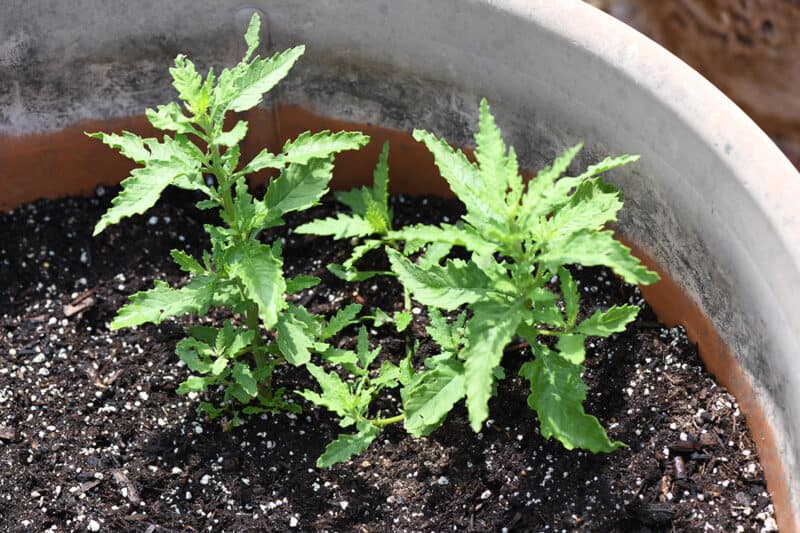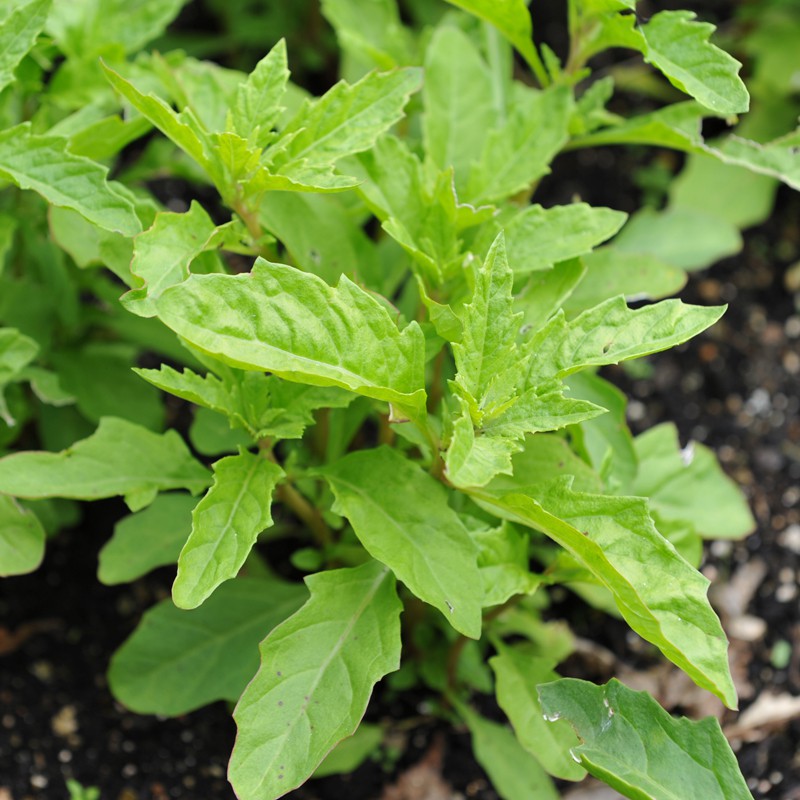Epazote Companion Plants: The Ultimate Guide To Growing This Beneficial Herb
Epazote, also known as Mexican tea or wormseed, is a leafy green herb that is native to Mexico and Central America. It has a strong, somewhat unpleasant odor that some people find off-putting, but it is a popular ingredient in Mexican cuisine, especially in dishes made with beans. Epazote is also used medicinally to treat a variety of ailments, including stomachache, diarrhea, and parasites.
In addition to its culinary and medicinal uses, epazote is also a beneficial companion plant. Companion planting is a gardening technique that involves planting certain plants together to help each other thrive. Epazote can be a beneficial companion plant for a variety of other plants, including:
- Corn: Epazote can help to deter corn borers, a common pest of corn plants.
- Beans: Epazote can help to improve the nitrogen content of the soil, which is beneficial for bean plants.
- Cucumbers: Epazote can help to repel cucumber beetles, another common pest of cucumber plants.
- Pumpkins: Epazote can help to improve the pollination of pumpkin flowers.
- Lavender: Epazote and lavender can help to repel each other's pests, making them good companion plants for each other.
If you are looking to grow epazote in your garden, there are a few things you need to keep in mind. Epazote prefers full sun and well-drained soil. It is a relatively hardy plant and can tolerate a variety of soil conditions, but it does best in sandy or loamy soil. Epazote is an annual plant, so it will need to be replanted each year.
To plant epazote, sow the seeds in the spring about 1/2 inch deep and 12 inches apart. The seeds will germinate in about 7-10 days. Once the plants have sprouted, thin them to 2-3 feet apart. Epazote can be watered regularly, but it does not need a lot of water. Fertilize epazote every few weeks with a balanced fertilizer.
Epazote is ready to harvest when the leaves are about 4 inches long. You can harvest the leaves as needed or cut the entire plant at the base. Epazote leaves can be used fresh or dried. To dry epazote, simply hang the leaves upside down in a dark, dry place.
Epazote is a versatile herb that can be used in a variety of dishes. It is a popular ingredient in Mexican cuisine, but it can also be used in other types of cooking. Epazote can be added to soups, stews, and sauces. It can also be used to flavor beans, rice, and eggs.
If you are looking for a beneficial companion plant that can also add flavor to your food, epazote is a great option. Epazote is easy to grow and care for, and it can be used in a variety of dishes. So next time you are planning your garden, be sure to add some epazote to the mix.
Epazote is a flavorful herb that is native to Mexico and Central America. It has a strong, somewhat minty odor that can be off-putting to some people, but it is prized for its use in traditional Mexican cooking. Epazote is also a beneficial companion plant, meaning that it can help to deter pests and attract beneficial insects to your garden.
Some good companion plants for epazote include:
- Lavender: Lavender is a beautiful and fragrant herb that can help to repel pests. It also attracts beneficial insects, such as ladybugs and lacewings.
- Corn: Corn is a heavy feeder, so it benefits from the nitrogen-fixing properties of epazote. Epazote also helps to deter corn earworm moths.
- Beans: Beans and epazote are mutually beneficial companions. Beans fix nitrogen in the soil, which epazote can use. Epazote, in turn, helps to deter pests that attack beans.
- Cucumbers: Epazote can help to deter cucumber beetles and squash bugs. It also attracts beneficial insects, such as parasitic wasps, that can help to control these pests.
- Pumpkins: Epazote can help to deter squash bugs and cucumber beetles. It also attracts beneficial insects, such as parasitic wasps, that can help to control these pests.
For more information about epazote companion plants, please visit Gardenia Inspiration.
FAQ of epazote companion plants
1. What are some good companion plants for epazote?
Epazote is a member of the mint family, and it has a strong, pungent flavor that can be overpowering. As a result, it's best to plant it with other herbs that have a milder flavor, such as:
- Lavender
- Corn
- Beans
- Cucumber
- Pumpkin
- Mint
These plants will not be overwhelmed by the flavor of epazote, and they can also help to deter pests.
2. What are some of the benefits of companion planting with epazote?
There are several benefits to companion planting with epazote. First, epazote can help to repel pests. The strong scent of the plant can deter insects such as mosquitoes, ants, and aphids. Second, epazote can help to improve the flavor of other plants. When planted near tomatoes, for example, epazote can help to reduce the acidity of the tomatoes and make them more flavorful. Third, epazote can help to improve the soil quality. The plant's deep roots help to aerate the soil and improve drainage.
3. How far apart should I plant epazote companion plants?
The distance you plant epazote companion plants apart will depend on the size of the plants. For smaller plants, such as lavender, you can plant them about 6 inches apart. For larger plants, such as corn, you may need to plant them 2 feet apart.
4. How do I know if my epazote companion plants are compatible?
There are a few things you can look for to see if your epazote companion plants are compatible. First, make sure that the plants have similar growing requirements. They should both need the same amount of sunlight, water, and soil pH. Second, make sure that the plants will not compete with each other for nutrients. Some plants, such as tomatoes, are heavy feeders and will need more nutrients than other plants.
5. How do I care for epazote companion plants?
The care requirements for epazote companion plants will vary depending on the type of plant. However, some general tips include:
- Water the plants regularly, especially during hot, dry weather.
- Fertilize the plants every few weeks with a balanced fertilizer.
- Remove any dead or diseased leaves.
- Protect the plants from pests and diseases.
Image of epazote companion plants
- Tomatoes: Epazote is a good companion plant for tomatoes because it helps to repel tomato hornworms.
- Beans: Epazote can also be planted near beans to help deter pests such as Mexican bean beetles.

- Cucumbers: Epazote can also help to repel cucumber beetles and squash bugs.

- Peppers: Epazote can also be planted near peppers to help deter aphids and whiteflies.

- Squash: Epazote can also be planted near squash to help deter squash bugs and cucumber beetles.
Post a Comment for "Epazote Companion Plants: The Ultimate Guide To Growing This Beneficial Herb"